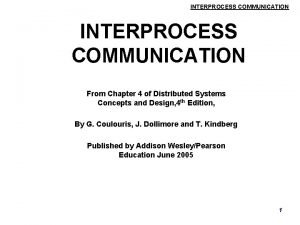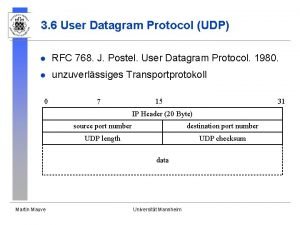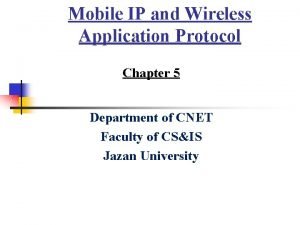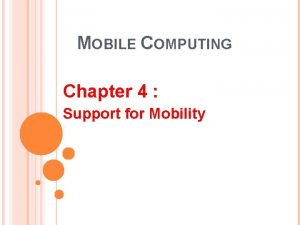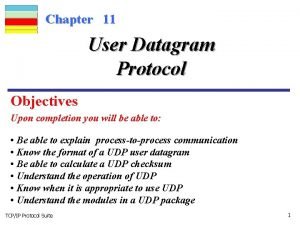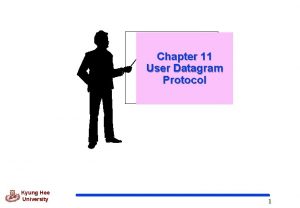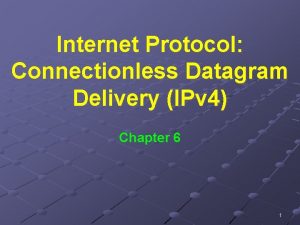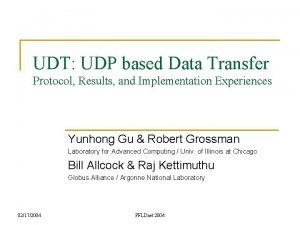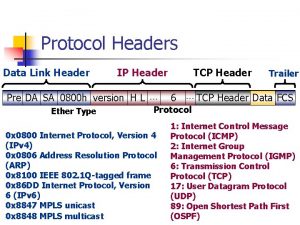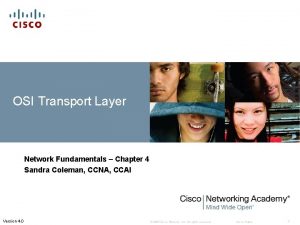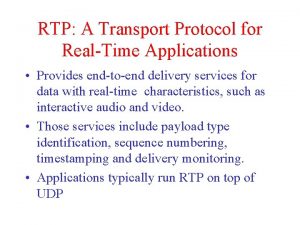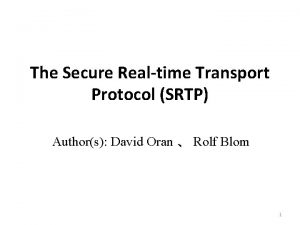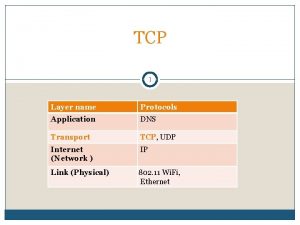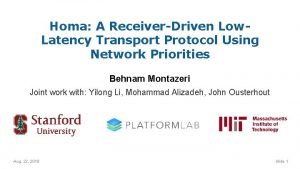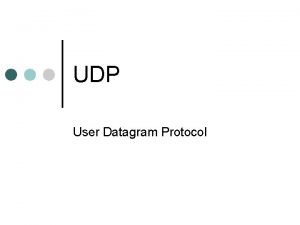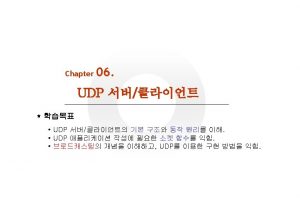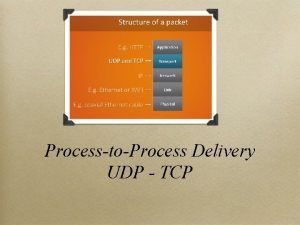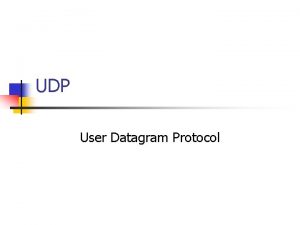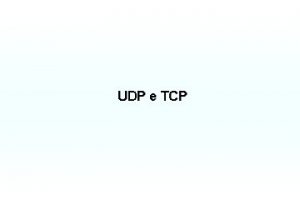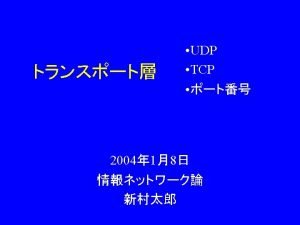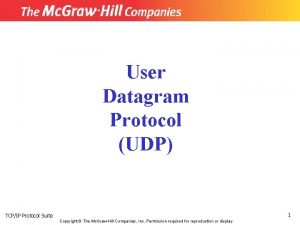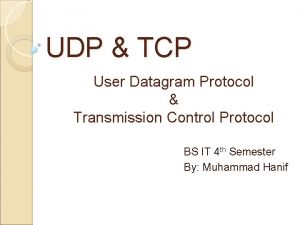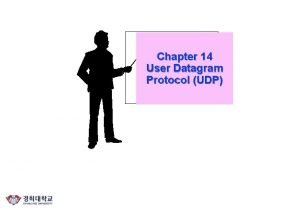UDP Datagram Transport Service 1 Transport Protocol Separate
















- Slides: 16

UDP: Datagram Transport Service 1

Transport Protocol • Separate layer of protocol stack • Conceptually between – Applications – IP 2

Terminology • IP – Provides computer-to-computer communication – Source and destination addresses are computers – Called machine-to-machine • Transport protocols – Provide application-to-application communication – Need extended addressing mechanism to identify applications – Called end-to-end 3

Transport Protocol Functionality • Identify sending and receiving applications • Optionally provide – Reliability – Flow control – Congestion control • Note: not all transport protocols provide above facilities 4

Relationship Between Transport Protocols And Other Protocols • Transport protocols are end-to-end • Transport protocol on one computer uses IP to communicate with transport protocol on another computer 5

Two Transport Protocols Available • Transmission Control Protocol (TCP) • User Datagram Protocol (UDP) • Major differences – Interface provided to applications – Underlying functionality 6

User Datagram Protocol • Lightweight transport • Becoming more popular (IP telephony) • Best-effort delivery 7

UDP Features • • • Connectionless service Arbitrary interaction Message-oriented interface Best-effort semantics Each message encapsulated in IP datagram Uses protocol ports to identify applications 8

UDP Details • Accepts and delivers messages – Message received is exactly same as message sent – Boundaries preserved • Maximum message size approximately 64 K octets • Efficient – No connection overhead – No state information maintained 9

UDP Semantics • Same best-effort semantics as IP (i. e. , unreliable transfer) • Message can be – Lost – Duplicated – Delayed – Delivered out of order • Works best in LAN applications 10

Interaction With UDP • UDP allows communication that is – 1 -to-1 – 1 -to-many – Many-to-1 – Many-to-many • Application programmer chooses 11

Packet Delivery • UDP can support – Unicast – Multicast – Broadcast 12

User Datagram Format • Extremely small header (called thin layer) • Checksum optional 13

UDP Encapsulation • Two levels of encapsulation • UDP datagram size cannot exceed maximum IP payload 14

Identifying An Application • Cannot extend IP address – No unused bits • Cannot use OS-dependent quantity – Process ID – Task number – Job name • Must work on all computer systems 15

Identifying An Application (continued) • Invent new abstraction – Called protocol port number – Used to identify sending or receiving application unambiguously – Independent of underlying operating system – Used only with TCP/IP protocols 16
 Request reply protocol in distributed system
Request reply protocol in distributed system Udp header
Udp header Wireless datagram protocol in mobile computing
Wireless datagram protocol in mobile computing Wtls in mobile computing
Wtls in mobile computing User datagram protocol diagram
User datagram protocol diagram User datagram protocol diagram
User datagram protocol diagram Datagram delivery protocol
Datagram delivery protocol Udp-based data transfer protocol
Udp-based data transfer protocol Datalink header
Datalink header Udp protocol
Udp protocol Transport udp
Transport udp A transport protocol for real time applications
A transport protocol for real time applications Internet transport protocol in computer networks
Internet transport protocol in computer networks Secure real-time transport protocol
Secure real-time transport protocol Dns transport layer protocol
Dns transport layer protocol Design goals of transport layer protocol
Design goals of transport layer protocol Homa protocol
Homa protocol
